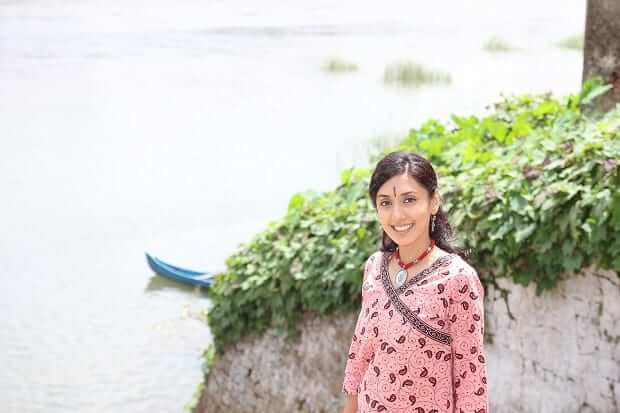A researcher at QUT examines the innovative techniques Bharatanatyam teachers use in their instruction

Teaching classical Indian dance to students outside of India, Bharatanatyam dancer Bindu Rajendren found she has had to constantly adopt new techniques in her instruction.
Over the course of ten years as a teacher, she picked up a few lessons in the process of negotiating her training practices for an audience that was not immersed in the culture of the dance. Yet she was still not convinced whether she was adapting her classical dance knowledge in a way that led to meaningful comprehension by her dance pupils.
This prompted her to pursue a Phd in Dancing from the Queensland University of Technology (QUT).
“I remember an instance when I tried to teach a dance movement of dressing up through adornment,” Bindu tells Indian Link. “The action required the showing of the wearing of an earring. The dance movement is typically shown by the turning of the hands in a particular hand gesture (mudra) near the ear. Traditional Indian earrings have a screw-type closure. However my student could not comprehend this and questioned this action as she had only seen a push-type earring back! She said, ‘Why turn a screw, can’t we just push the earring in?’ I had to take out a jhoomka (traditional Indian earring) and show her the screw-type earring back behind it. Then she was able to comprehend what I was trying to teach her”.
Bindu always wondered whether other teachers of dance have encountered similar situations and challenges.
Her research aims to understand how Indian classical dance teachers negotiate their teaching practices when they teach their traditional discipline in a multicultural Australian setting where contemporary educational strategies are implemented.
“In India the teacher teaches and the student imitates, but in Australia there is more conversation between the teacher and student,” says Bindu.
This is almost a part of the training where the teacher needs to explain the reasons to a student about a certain dance phrase or step in a particular way.
In India, Bindu notes, students of dance have awareness through Indian mythological stories that they have grown up with, and by being immersed in the culture. They also learn through newspapers, magazines, or television, whereas in Australia it is a blank canvas; there is no exposure, therefore it makes it difficult for students to comprehend the nuances of Indian classical dance forms.
“I believe that for most Indian classical dance teachers, what they know of teaching comes from imitating their teacher and learning to teach as they go. I am myself a classic example of this,” says Bindu.
For teachers of dance, their learning and their teaching are both processes that they continue to build on. Most Indian classical dance teachers who teach in a multicultural Australian context want their students to experience the same level of knowledge and access to dance as they themselves experienced when they learnt the dance back in India. However in the process of shifting the teaching space to a multicultural Australian context, and teaching students who come from this new setting, teachers often have to adapt and repackage what they teach in ways that are meaningful for their students.
“This is what I intend to understand in my research: the methods teachers use to teach and how they package and deliver Indian classical dance (to a new cultural audience)”.
Currently in her first year of research, Bindu is working with three Indian classical dance teachers, two of who are based in Brisbane and one interstate.
The duration of this research spans four years; the first year involved laying the foundation for the research, the second will encompass data collection, the third year will focus on the analysis through the themes emerging from the research and the final year will be spent in writing her research.
Bindu is looking at applying for a grant to QUT to present her study at conferences.
“I am hoping that this research will not only benefit and be of value to Indian classical dancers but will also hold some usefulness for teachers of dance of other cultures, for example Salsa, African dance etc, who want to or have adapted their dance in new cultural contexts and spaces. I think there is potential to build on this subject”.
Even though Bindu’s irresistible urge to dance remains suppressed currently, there is no doubt that as her research unfolds, she will return to it not only with renewed passion but with new insights as well.




